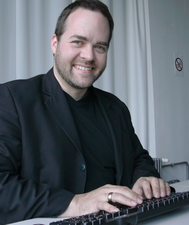Klaus Knopper answers your Linux questions
Ask Klaus

Klaus Knopper answers your Linux questions
BIOS Reaction
Klaus: I purchased an HP Notebook 15 AMD. The BIOS was corrupted soon after. Here is how various distros reacted with secure boot and UEFI disabled:
- Mint – Installed okay with a fuzzy screen appearing in the bootup process. The error message said "the hardware acceleration is disabled and this mode should only be used for troubleshooting." I could use the OS. Mint did not allow me to
suto root. - Fedora – The install process crashed when a notice appeared saying KVM is disabled.
- Tisquel – The install was successful, but it reported that I was not root during the install process and tried to fix the problem. I never saw the message again.
- Yet Another Distro – Reported that the SMBIOS was disabled and crashed.
- Mageia – Crashed during install.
- Korora – Reported the KVM message and crashed during install.
With secure boot and UEFI enabled, Windows 8 booted up okay and reported nothing. I have tried flashing the BIOS, but it is blocked using the HP BIOS tool from Windows and Wine.
[...]
Buy this article as PDF
(incl. VAT)
Buy Linux Magazine
Subscribe to our Linux Newsletters
Find Linux and Open Source Jobs
Subscribe to our ADMIN Newsletters
Support Our Work
Linux Magazine content is made possible with support from readers like you. Please consider contributing when you’ve found an article to be beneficial.

News
-
Parrot OS Switches to KDE Plasma Desktop
Yet another distro is making the move to the KDE Plasma desktop.
-
TUXEDO Announces Gemini 17
TUXEDO Computers has released the fourth generation of its Gemini laptop with plenty of updates.
-
Two New Distros Adopt Enlightenment
MX Moksha and AV Linux 25 join ranks with Bodhi Linux and embrace the Enlightenment desktop.
-
Solus Linux 4.8 Removes Python 2
Solus Linux 4.8 has been released with the latest Linux kernel, updated desktops, and a key removal.
-
Zorin OS 18 Hits over a Million Downloads
If you doubt Linux isn't gaining popularity, you only have to look at Zorin OS's download numbers.
-
TUXEDO Computers Scraps Snapdragon X1E-Based Laptop
Due to issues with a Snapdragon CPU, TUXEDO Computers has cancelled its plans to release a laptop based on this elite hardware.
-
Debian Unleashes Debian Libre Live
Debian Libre Live keeps your machine free of proprietary software.
-
Valve Announces Pending Release of Steam Machine
Shout it to the heavens: Steam Machine, powered by Linux, is set to arrive in 2026.
-
Happy Birthday, ADMIN Magazine!
ADMIN is celebrating its 15th anniversary with issue #90.
-
Another Linux Malware Discovered
Russian hackers use Hyper-V to hide malware within Linux virtual machines.

